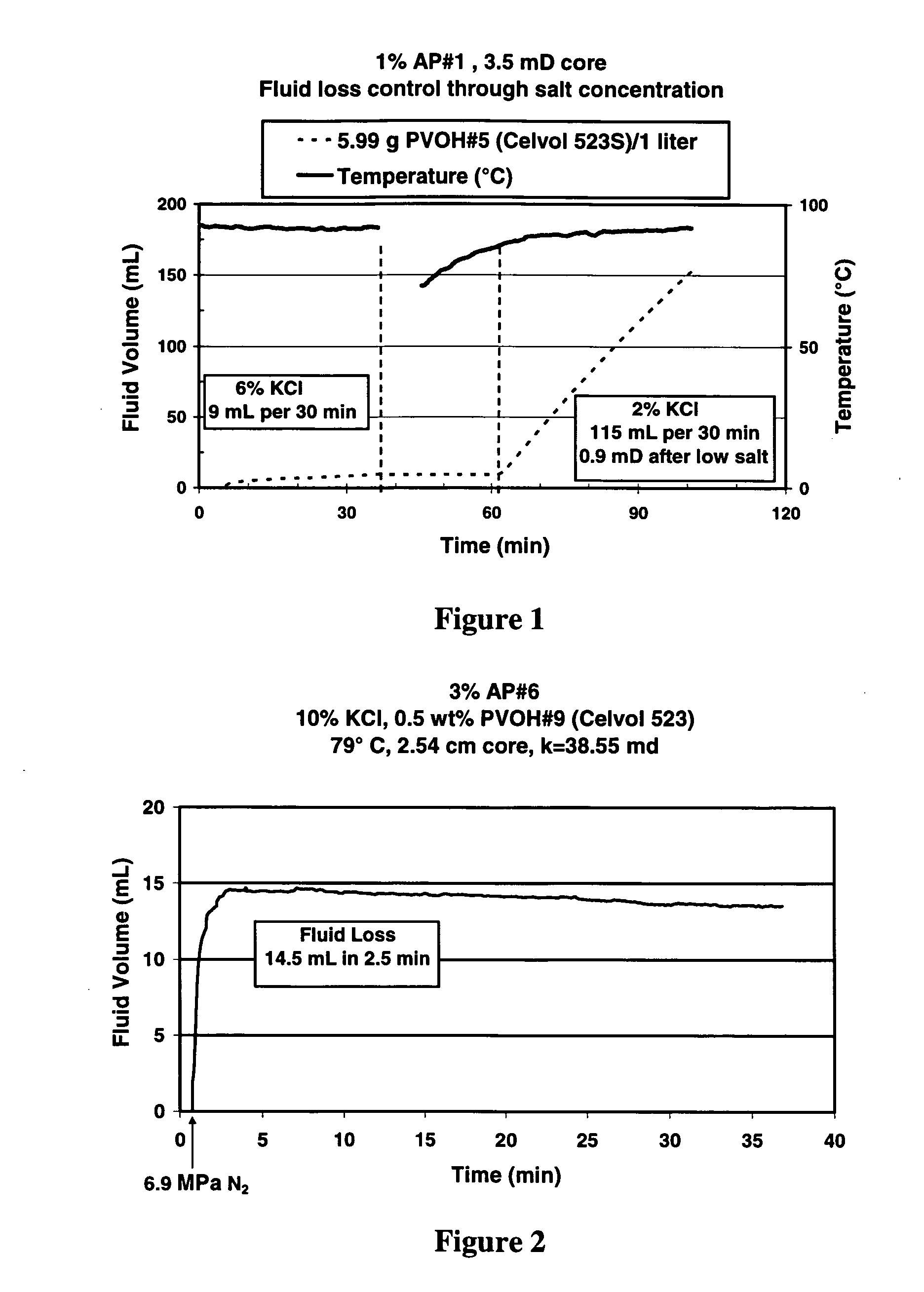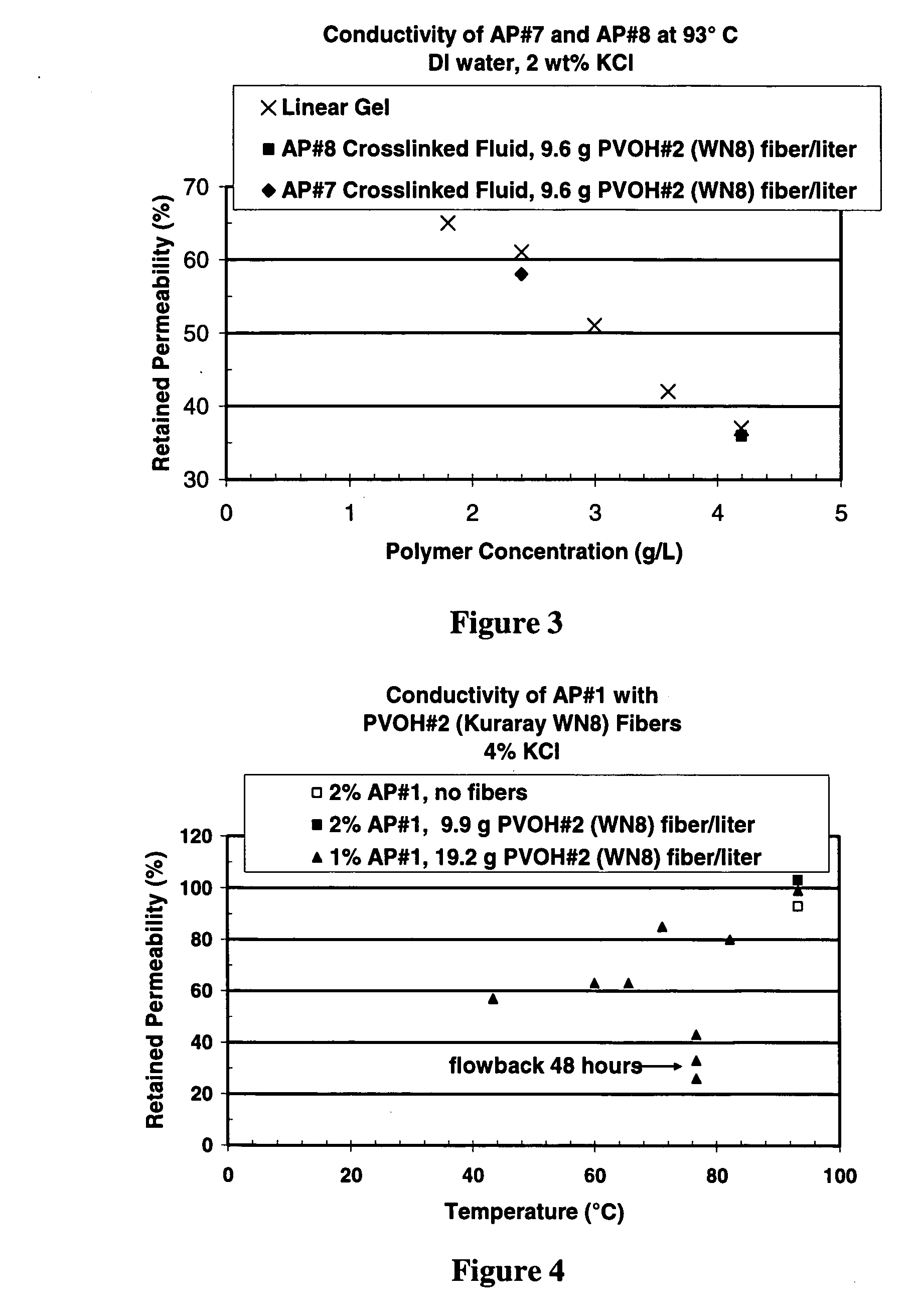Well treatment with dissolvable polymer
a dissolvable polymer and well technology, applied in the direction of separation process, well accessories, insulation, etc., can solve the problems of reducing the efficiency of fluid placement, fluid loss, equipment, time, fluid volume, etc., and achieve the effect of ease and flexibility for subsequent completion processes
- Summary
- Abstract
- Description
- Claims
- Application Information
AI Technical Summary
Benefits of technology
Problems solved by technology
Method used
Image
Examples
examples
[0137] In the examples below, the following fluid formulations, PVOH's and other materials are used:
Fluid Formulations
[0138] AP#1—Surfactant Concentrate:
Chemical CompositionWeight %Propane-1,2-diol13.4Propan-2-ol20.4Water5.1(Z)-13 Docosenyl-N-N-bis(2-Hydroxyethyl) Methyl61.1Ammonium Chloride
[0139] AP#2—Salt-Tolerant Fracturing Fluid:
[0140] A salt tolerant fracturing fluid specially modified to be made with fresh water and to be made with low guar concentrations and low crosslinker concentrations. Contains 3 g / L (25 ppt) guar, 20 g / L (167 ppt) potassium chloride, and 2.5 mL / L (2.5 gpt) of a borate crosslinker. The borate crosslinker is an 85:15 blend containing 85% of a 20-30% glycerol solution, 10-20% sodium tetraborate decahydrate, and 60-70% water, and 15% of a solution of 30% aqueous sodium hydroxide.
[0141] AP#3—Surfactant Concentrate:
Chemical CompositionWeight %Urea2-3Propane-1,2-diol8Isopropanol11-12Ammonium Nitrate3Water29Quaternary Ammonium Compound10-30Quaternary Am...
PUM
| Property | Measurement | Unit |
|---|---|---|
| Percent by mass | aaaaa | aaaaa |
| Percent by mass | aaaaa | aaaaa |
| Percent by mass | aaaaa | aaaaa |
Abstract
Description
Claims
Application Information
 Login to View More
Login to View More - R&D
- Intellectual Property
- Life Sciences
- Materials
- Tech Scout
- Unparalleled Data Quality
- Higher Quality Content
- 60% Fewer Hallucinations
Browse by: Latest US Patents, China's latest patents, Technical Efficacy Thesaurus, Application Domain, Technology Topic, Popular Technical Reports.
© 2025 PatSnap. All rights reserved.Legal|Privacy policy|Modern Slavery Act Transparency Statement|Sitemap|About US| Contact US: help@patsnap.com



